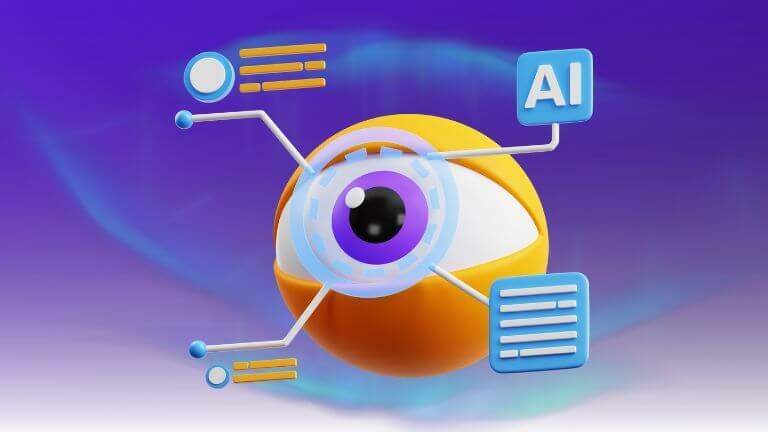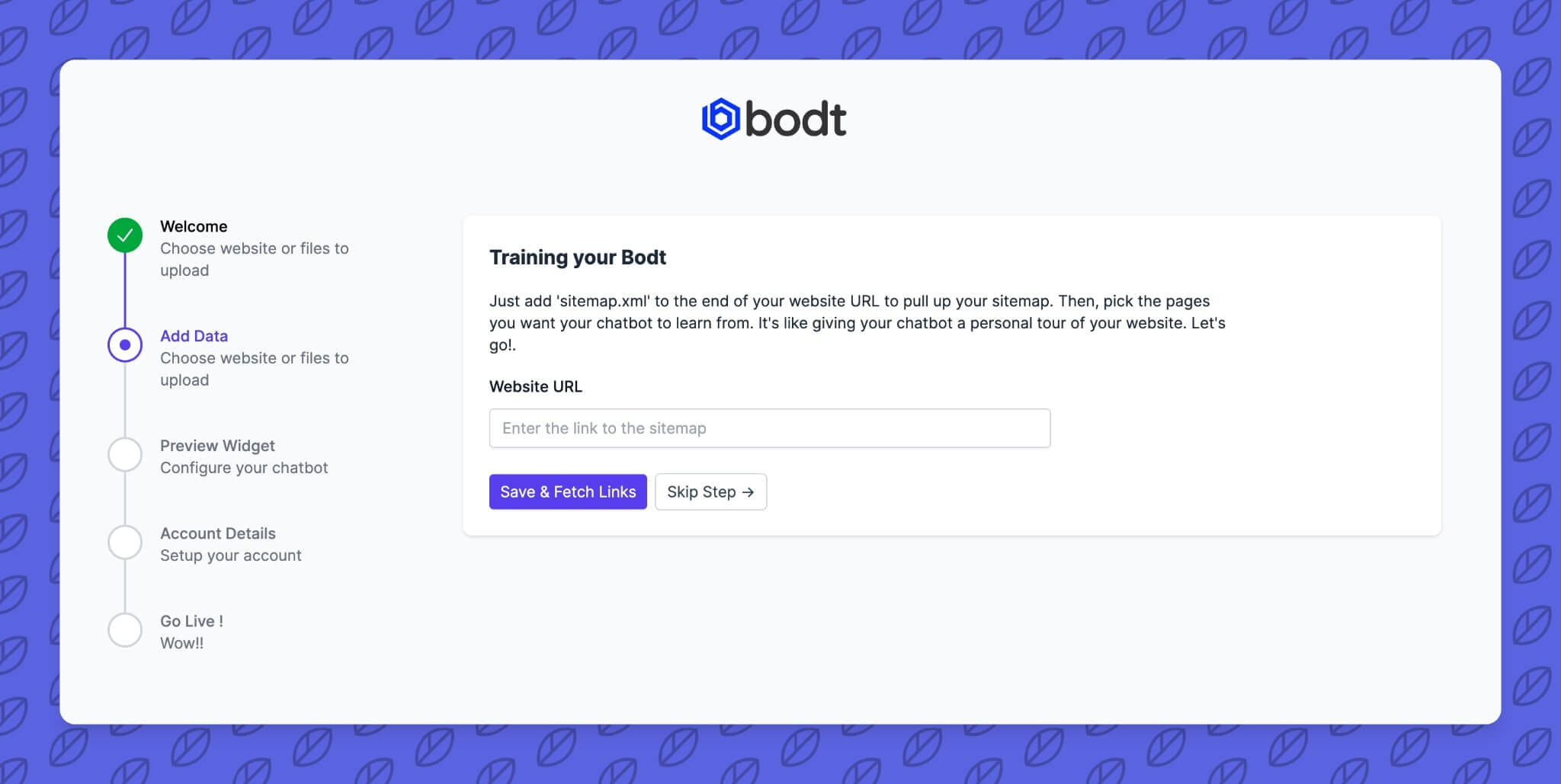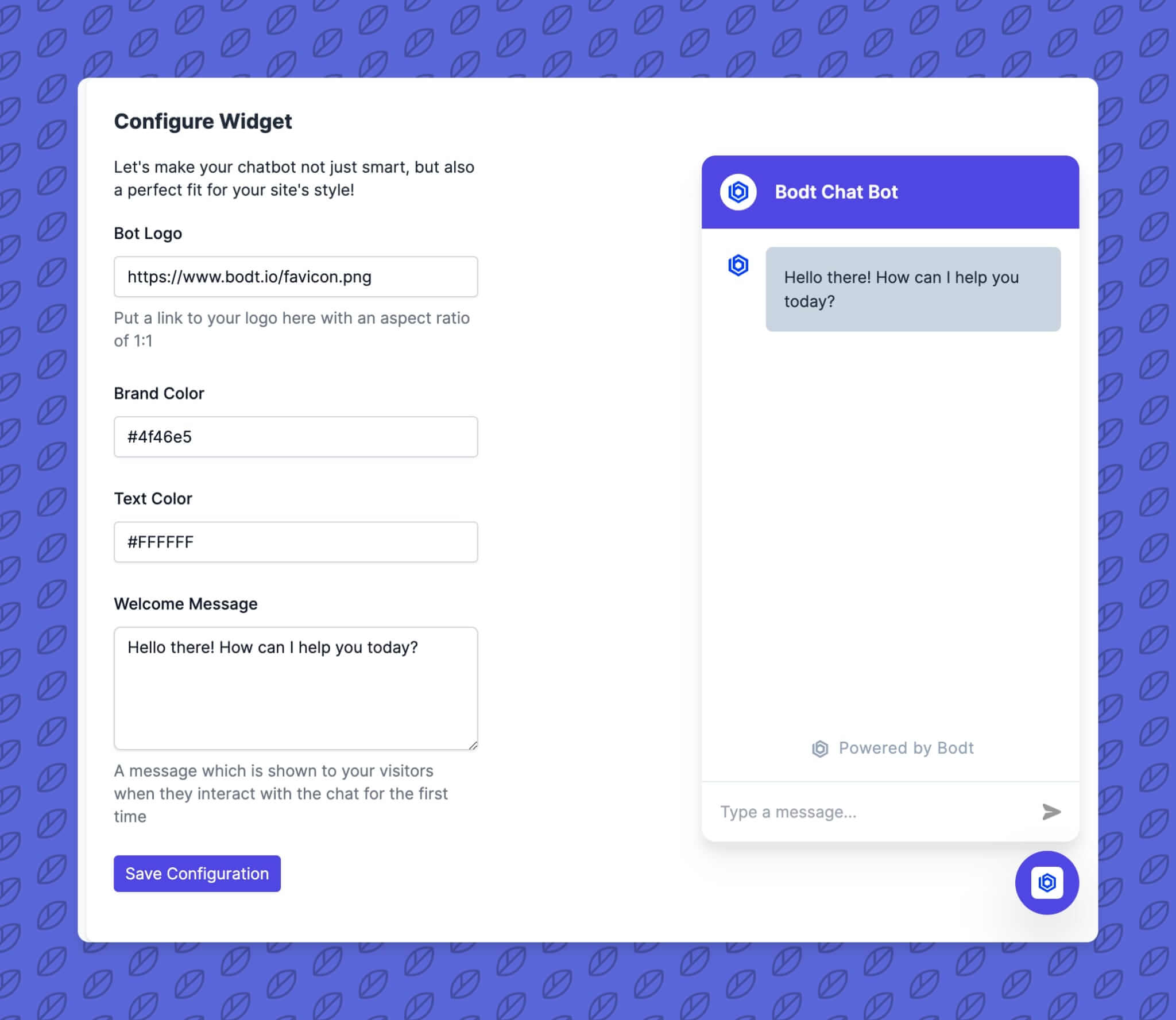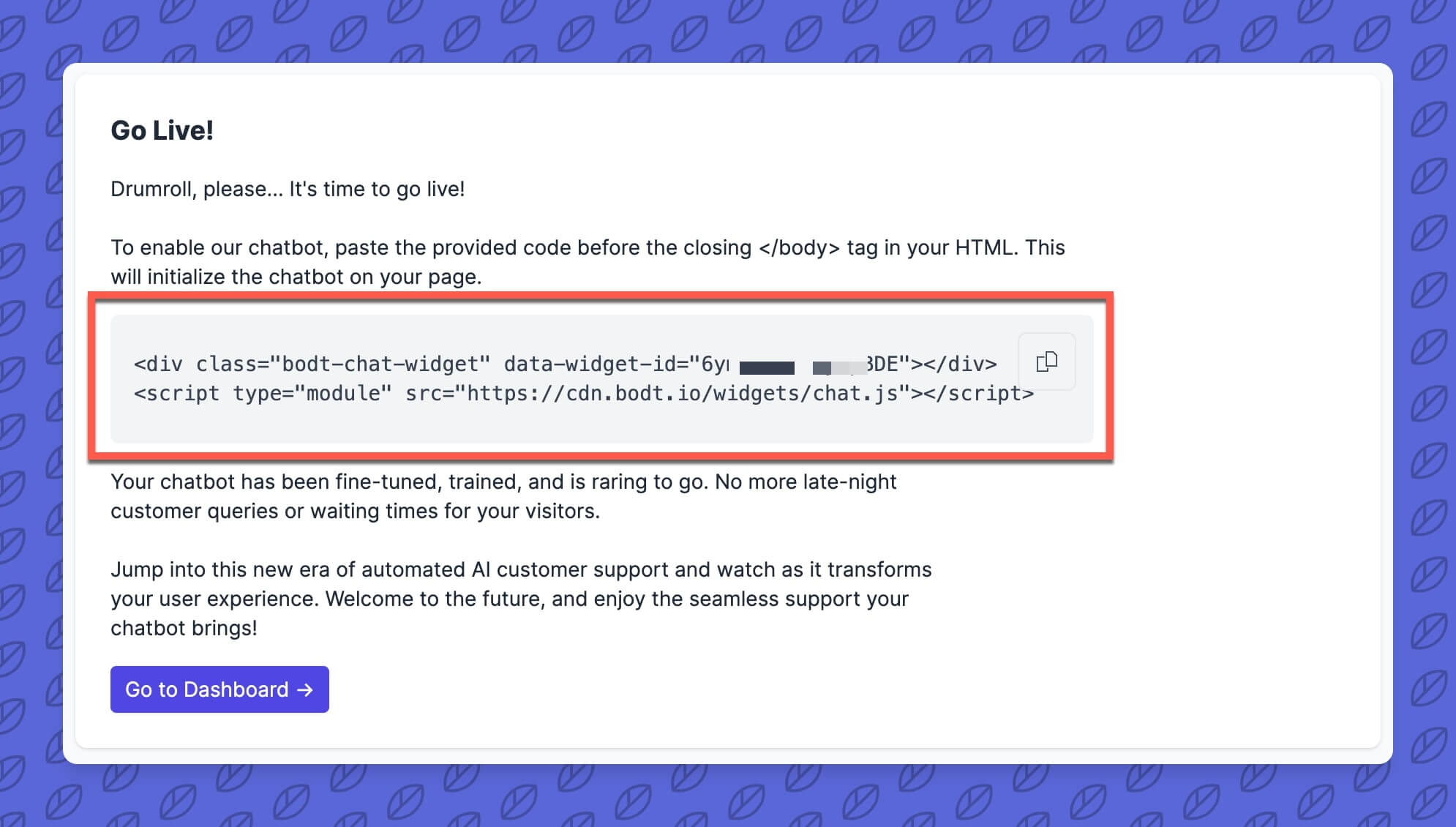
Imagine a world where your website visitors are greeted and assisted by an AI that can chat just like a human. Sounds futuristic? Well, the future is here with GPT-3. In our blog, we're about to take you on a journey through the ins and outs of this revolutionary chatbot.
As websites constantly seek ways to engage users more effectively and streamline customer support, GPT-3 emerges as a frontrunner in this race. But what makes it stand out from the crowd? How can you harness its power for your platform? And most importantly, is it truly the key to unlocking unparalleled user engagement and efficient customer support?
Stick with us as we understand everything from its integration process to ensuring user data remains secure. Whether you're a seasoned tech enthusiast or just curious about the next big thing in online customer interaction, this guide promises insights and answers that could reshape the way you view online engagement.
What is GPT-3, and how does it differ from other chatbot technologies?
To understand how GPT differs from other chatbot technologies, let’s first understand what is GPT:
What is GPT-3?
GPT-3, which stands for "Generative Pre-trained Transformer 3," is a state-of-the-art language processing AI model developed by OpenAI. It's the third iteration of the GPT architecture. Here are some key features and attributes of GPT-3:
- Size and Scale: GPT-3 is one of the largest language models ever created, with 175 billion parameters. Parameters are the parts of the model that are learned from the data during training.
- Training Data: GPT-3 is trained on vast amounts of text data sourced from the internet. This extensive training allows it to generate human-like text based on the patterns it has learned.
- Few-shot Learning: One of the standout features of GPT-3 is its ability to perform tasks with very few examples (or "shots"). You can give it a couple of examples, and it can generalize and perform similar tasks without explicit training.
- Versatility: GPT-3 can perform a wide range of tasks without task-specific training. This includes translation, question-answering, text generation, summarization, and more.
How does GPT-3 differ from other chatbot technologies?
- Training Approach Traditional chatbots are rule-based, meaning they follow predefined rules and decision trees. If a user says X, the bot responds with Y. GPT-3, on the other hand, doesn't rely on hardcoded rules. Instead, it generates responses based on patterns in the data it was trained on.
- Flexibility While many chatbots are designed for specific domains or tasks (like customer support for a particular product), GPT-3 is more general-purpose. It can engage in a wide variety of conversations and topics, making it more versatile.
- Learning with Few Examples As mentioned, GPT-3's few-shot learning capability is a significant differentiator. Traditional models often require extensive fine-tuning for specific tasks, but GPT-3 can adapt to new tasks with just a few examples.
- Depth of Knowledge Due to its extensive training data, GPT-3 has a broad knowledge base. It can provide information on a wide range of topics, whereas many chatbots are limited to their specific training data.
- Generative Capability GPT-3 is a generative model, meaning it can create new, coherent, and contextually relevant text based on the input it receives. Many chatbots, especially rule-based ones, can only select from a set of predefined responses.
- Limitations While GPT-3 is advanced, it's not without limitations. It can sometimes produce incorrect or nonsensical answers, and it lacks a true understanding of the content.Traditional chatbots, being rule-based, are more predictable in their responses.
GPT-3 represents a significant leap in the field of natural language processing and AI. Its scale, versatility, and ability to generate human-like text set it apart from many traditional chatbot technologies.
How do I integrate a GPT-3 chatbot into my website or platform?
Integrating a GPT-3 chatbot into your website or platform involves several steps, from obtaining API access to designing the user interface. Here's a step-by-step guide to help you with the integration:
1. Obtain GPT-3 API Access:
Before you can integrate GPT-3 into your platform, you need access to the GPT-3 API.
- Request Access: OpenAI now provides direct access to the GPT-3 API. You can sign up and get started on the OpenAI platform.
- API Key: After signing up, you'll be able to generate your API key from the OpenAI platform dashboard. This key is crucial for making requests to the GPT-3 API.
2. Set Up Your Development Environment:
- Backend Setup: Choose a backend framework or platform. Common choices include Node.js, Django, Flask, and Ruby on Rails.
- Frontend Setup: Decide on a frontend framework or library. Options include React, Vue.js, Angular, or even vanilla JavaScript.
3. Implement the GPT-3 API Call:
- Backend Implementation:
- Use an HTTP client library (like axios for Node.js or requests for Python) to make POST requests to the GPT-3 endpoint.
- Include your API key in the request header.
- Send user input as data in the POST request to get a response from GPT-3.
- Error Handling: Implement error handling to manage potential issues, like rate limits, timeouts, or incorrect inputs.
4. Design the Chat Interface:
- Create a user-friendly chat interface on your website. This typically includes an input box for user queries and a display area for both user and chatbot responses.
- Implement real-time updates to display the chatbot's responses as soon as they're received from the API.
5. Optimize User Experience:
- Prompt Design: Craft your prompts carefully. The way you phrase your prompts to GPT-3 can significantly impact the quality of the responses.
- Rate Limiting: Be aware of the rate limits set by OpenAI for the GPT-3 API. Implement mechanisms to handle situations where you might exceed these limits.
- Feedback Loop: Allow users to provide feedback on the chatbot's responses. This can help you refine and improve the chatbot experience over time.
6. Ensure Security and Privacy:
- Secure API Key: Never expose your API key on the client side. Always make calls to GPT-3 from your server to keep the key secure.
- User Data: Be transparent about how you handle and store user data. Consider implementing mechanisms to anonymize or delete sensitive user data to ensure privacy.
7. Test and Iterate:
- Conduct thorough testing to ensure the chatbot works as expected. This includes testing various user inputs, handling edge cases, and ensuring the UI/UX is smooth.
- Collect feedback and continuously iterate on the chatbot's design and functionality to enhance the user experience.
8. Deployment:
- Once you're satisfied with the chatbot's performance and user experience, deploy the updated version of your website or platform with the integrated GPT-3 chatbot.
9. Monitor and Update:
- Regularly monitor the chatbot's performance, user feedback, and any updates or changes to the GPT-3 API. Make necessary adjustments to ensure optimal performance and user satisfaction.
By following these steps, you can successfully integrate a GPT-3 chatbot into your website or platform, providing users with a powerful and interactive AI-driven experience.
Can I integrate GPT-3 chatbot into my website without Coding?
Absolutely! You can integrate a GPT-3 chatbot into your website without worrying about coding by using platforms like Bodt.io. Here's a step-by-step guide based on the information from Bodt.io's documentation:
1. Setting Up Data:

- Train AI Models with Your Data: Bodt.io allows you to use your own website data to train its AI models. This ensures that the chatbot is tailored to answer queries specific to your website's content and your customers' needs.
- Add Your Website: Simply input your website URL or sitemap URL into Bodt.io. Once added, click on "Save & Fetch Links'' to extract all relevant records from your website.
- Train the Model: Bodt.io initially displays the first 50 links from your website. You can opt to train more links later. To start the training process, select the desired links and click on "Train Selected". Keep in mind that there might be charges associated with training the models.
2. Configure the Chatbot Widget:

- Customization: Bodt.io provides a user-friendly interface where you can customize the appearance and behavior of the chatbot widget that will be embedded on your site.
- Settings Include:
- Bot Logo: Add a logo for your chatbot by providing the appropriate URL. A square-shaped image is recommended.
- Brand Color: Define the primary color of the chatbot to match your brand by inputting the relevant hex color code.
- Text Color: Choose the color for the text in the chatbot's header.
- Welcome Message: Set an introductory message that users will see when they first interact with the chatbot.
- After configuring the settings, save your changes to proceed.
3. Go Live with the Chatbot:

- Embedding the Widget: The final step is to embed the chatbot widget on your website. Bodt.io will provide a specific code snippet for this.
- Implementation: You'll need to place the provided code just before the </body> tag on your website. This action will enable the chatbot on your site. If you're unfamiliar with this step, you can share the code with a web developer or someone with basic website editing knowledge for assistance.
Platforms like Bodt.io simplify the process of integrating GPT-3 powered chatbots into websites, making it accessible even for those without coding expertise. By following the guided steps on Bodt.io, you can have a GPT-3 chatbot up and running on your site in no time.
Can I train or customize the GPT-3 chatbot to better align with my business needs and industry-specific queries?
Training and Customizing GPT-3:
Fine-Tuning: While OpenAI's GPT-3 model itself isn't directly fine-tunable in the traditional sense, you can guide its responses by crafting your prompts carefully. The way you phrase your prompts can significantly influence the model's output.
Prompt Engineering: By experimenting with different prompts and instructions, you can guide GPT-3 to produce responses that are more in line with your business's tone, style, and requirements.
Feedback Loop: Implement a system where users can provide feedback on the chatbot's responses. This feedback can be invaluable in refining your prompts and instructions to get better results over time.
Using Bodt.io's Chat Persona:
Bodt.io offers an advanced customization feature called " Chat Persona". This feature allows you to define the character and behavior of your chatbot, ensuring it aligns with your business's persona.
Customization Warning
It's essential to approach this advanced customization with caution. If you're unfamiliar with prompting techniques, there's a risk of affecting the chatbot's output quality. In such cases, it's advisable to reach out to support for assistance.
Defining Behavior
The Chat Persona instructs your chatbot on how to behave when users interact with it. You can modify this behavior by visiting the settings section on the widget section of Bodt.io and altering the "Chat Prompt" provided by the system for your widget.
Example: Bodt.io provides an example where the chat prompt is modified to instruct the chatbot to always respond in the French language. This showcases the flexibility in guiding the chatbot's behavior to meet specific requirements.Details
While GPT-3 itself isn't directly fine-tunable, you can guide its behavior and responses using prompt engineering and advanced customization features provided by platforms like Bodt.io. By doing so, you can ensure that the chatbot aligns well with your business needs and provides accurate, industry-specific responses.
How advanced is the conversational capability of a GPT-3 chatbot, and can it handle complex user queries?
The conversational capability of GPT-3 is very advanced, that is why GPT-3 has 100+ million of users worldwide, let’s understand more about GPT-3 below:
1. Depth and Breadth of Knowledge:
- GPT-3 has been trained on vast amounts of text data from the internet, which gives it a broad knowledge base. This allows it to provide information on a wide range of topics, from science and technology to arts and culture.
2. Contextual Understanding:
- Unlike many earlier models, GPT-3 has a remarkable ability to understand context within a conversation. This means it can often provide relevant and coherent responses based on the flow of a conversation.
3. Few-shot Learning:
- One of GPT-3's standout features is its ability to understand and perform tasks with very few examples (or "shots"). You can provide it with a couple of examples, and it can generalize and perform similar tasks without explicit training.
4. Versatility:
- GPT-3 can perform a wide range of tasks without task-specific training. This includes translation, question-answering, text generation, summarization, and more. Its versatility makes it suitable for various applications, from chatbots to content creation.
5. Handling Complex Queries:
- GPT-3 can handle many complex user queries, often providing detailed and nuanced answers. Its large number of parameters (175 billion) allows it to generate responses that can address multifaceted questions.
6. Limitations:
- While GPT-3 is advanced, it's not infallible. It can sometimes produce incorrect or nonsensical answers.
- It lacks a "true" understanding of content. While it can generate human-like text based on patterns it has learned, it doesn't genuinely "understand" topics in the way humans do.
- It's sensitive to the input it receives. The phrasing of a question can influence the quality and accuracy of the answer.
- It doesn't have the ability to learn or remember user-specific data across sessions for privacy reasons, which means it doesn't offer personalized learning over time.
7. Ethical Considerations:
- Given its training data, GPT-3 can sometimes produce biased or inappropriate content. It's crucial to implement safeguards and filters when deploying GPT-3 in real-world applications to ensure the generated content aligns with ethical and community standards. While tools like Bodt.io already have prompts that counter AI-hallucination and a dedicated team that ensures the chatbot only gives accurate and contextual responses.
GPT-3 offers advanced conversational capabilities, making it a powerful tool for various applications, including chatbots. However, like all tools, it has its strengths and weaknesses. When deploying GPT-3, it's essential to be aware of its limitations and to use it in conjunction with other tools and systems to achieve the best results.
What are the costs involved in implementing and maintaining a GPT-3 chatbot, and how does it compare to human customer service agents?
Costs of Implementing and Maintaining a GPT-3 Chatbot:
Platform Costs
Platforms like Bodt.io offer various pricing tiers for integrating a GPT-3 chatbot:
- Starter Plan: $19/month
- 2,000 responses
- 500,000 words
- 25 FAQs
- Unlimited chatbots
- Growth Plan: $99/month
- 10,000 responses
- 2,000,000 words
- Unlimited FAQs
- Unlimited chatbots
- Premium Plan: $499/month
- 50,000 responses
- 25,000,000 words
- Unlimited FAQs
- Unlimited chatbots
- Enterprise Plan: Custom pricing based on specific requirements.
- OpenAI API Costs: OpenAI charges separately for using the GPT-3 API. The costs can vary based on the number of tokens processed and the specific model variant used. Maintenance Costs: Periodic updates, refinements, and monitoring might be needed to ensure the chatbot remains effective and up-to-date.
Human Customer Service Agents:
- Salaries: The most significant cost associated with human agents is their salary. Depending on the region and expertise, this can vary widely.
- Training: New agents require training, and even experienced agents need periodic training updates.
- Infrastructure: Costs related to workspace, equipment, software licenses, and other resources.
- Benefits and Overheads: Health benefits, insurance, taxes, and other overheads add to the total cost of employing human agents.
- Availability: Human agents typically work in shifts, meaning you might need multiple agents to provide 24/7 support.
Comparison:
- Scalability: GPT-3 chatbots can handle a large number of queries simultaneously, whereas human agents can handle one customer at a time.
- Availability: Chatbots are available 24/7 without breaks, while human agents require shifts and breaks.
- Consistency: Chatbots provide consistent responses, while human responses can vary based on the agent's mood, knowledge, and other factors.
- Complexity: While GPT-3 can handle many complex queries, there are situations where human intuition, empathy, and judgment are irreplaceable.
- Cost Efficiency: In the long run, chatbots can be more cost-effective, especially for businesses with high query volumes. However, the initial setup cost and periodic maintenance can be a factor.
- Flexibility: Human agents can adapt to unforeseen situations and provide personalized interactions, which chatbots might struggle with.
While GPT-3 chatbots offer advanced conversational capabilities and can be cost-effective in high-volume scenarios, human agents bring a personal touch, flexibility, and adaptability that's hard to replicate. The best approach often involves a combination of both, where chatbots handle routine queries, and human agents step in for more complex or sensitive issues.
Conclusion:
Implementing a GPT-3 chatbot offers businesses a cost-effective and scalable solution for handling customer queries. With platforms like Bodt.io, integration becomes more accessible, and the chatbot can be tailored to specific business needs. While the upfront costs of setting up and maintaining a chatbot might seem significant, in the long run, they can offer substantial savings, especially when compared to the recurring costs of human customer service agents.
However, it's essential to recognize the unique value that human agents bring to the table. Their ability to empathize, adapt to unforeseen situations, and provide a personal touch is something that technology, as of now, cannot fully replicate. For many businesses, a hybrid approach that combines the efficiency and scalability of chatbots with the human touch of customer service agents might be the most effective strategy.
In essence, while GPT-3 chatbots are a powerful tool in the customer service arsenal, they should be viewed as a complement to human agents rather than a complete replacement. The optimal balance between the two will depend on the specific needs, values, and priorities of each business.
